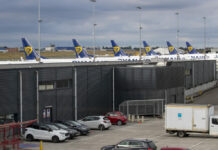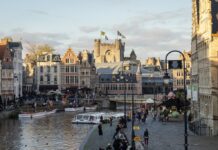Europe: The Brussels-Capital Region is turning another part of the city into a pedestrian zone, as the Boulevard de Waterloo, as well as the Avenue de la Toison d’ Or in the Porte de Namur area on the Small Ring road, will see a complete change.
The location consists of most luxury shops and hotels as well as they are of great importance for Brussels’s national and international attractiveness. The project will ensure safety in the vicinity of the crossroads and reduce the number of above-ground parking spaces.
Moreover, Brussels States Secretary for Urbanism Pascal Smet mentioned in the statement, “The project will be a huge change-maker for the entire district. And what’s more, we are once again converting a section of the inner ring road from an urban motorway to an urban boulevard.”
The project, therefore, also connects with the cycle paths along the inner ring road. “The city of tomorrow is taking shape, a city on a human scale where pedestrians and cyclists come first. With the redevelopment of Place Schuman and Place Royale still to come, the whole neighbourhood will be redesigned.”
Along with this, the project will give the area of the Small Ring a stronger identity using improved rows of trees, among other things. In addition, as the above-group parking spaces will be removed, it will be a lot more pleasant to walk to Egmont Park.
Between Place Louise and the entrance to the tunnel, the emphasis is on an “esplanade” that is screened by a transverse axis from façade to façade so that the pedestrian area is as large as possible and pedestrians and cyclists are given plenty of space.
Brussels Minister-President, Rudi Vervoort, stated, “It was only logical to give space back to pedestrians on one of the widest and busiest thoroughfares in Brussels. Our central concerns were our central concerns: a quality public space, space for pedestrians, accessibility and vibrant commercial activity.”
The pedestrian promenades along both facades will be maintained, which means that the sidewalks of Boulevard de Waterloo will be eight metres wide. A cycling axis will also be created through two-way cycle paths up to four metres wide.






